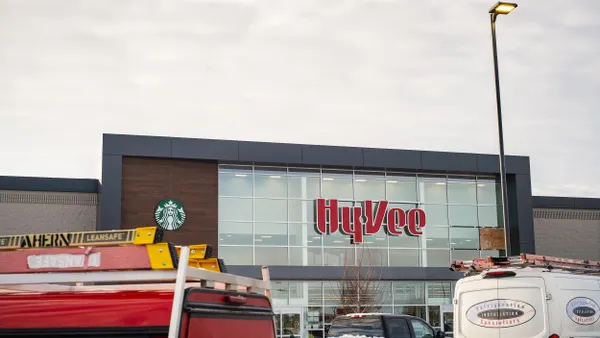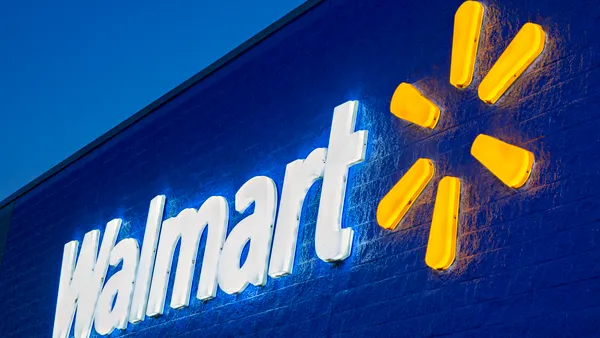Dive Brief:
- As the food retail industry looks to improve its supply chain, reducing food waste will play a key role for companies, Leslie Sarasin, president and CEO of the Food Industry Association (FMI), said during a press conference on Thursday.
- Combined, businesses and consumers in the U.S. throw away 25% to 40% of food grown, processed and transported domestically each year, according to the trade group.
- FMI outlined five main ways food retailers can step up their efforts to combat waste, including expanding donations of surplus food, developing a composting strategy and standardizing expiration package labeling. They should also develop organizational waste-prevention cultures and set waste reduction goals, Sarasin said.
Dive Insight:
While food waste is not a new challenge, the pandemic has worsened the problem, Dr. Ricky Volpe, associate professor of agribusiness at California Polytechnic State University, said during the press conference, where the trade group gave an update on the food retail industry and how it can address issues like supply chain woes, labor shortages and the rising price of food.
“Food waste has always been a major issue in the food supply chain," Volpe said. "The United States has the most technologically advanced and efficient food supply chain in the world, but as a percentage of total production, we still waste as much — if not more — food than any other developed country."
Supermarkets throw out more than 43 billion pounds of food annually and account for 10% of all food waste, according to Shelf Engine, a technology firm that addresses food waste.
“Clearly it takes time and commitment to build out a food waste reduction plan," Sarasin said, noting the industry should take a "multi-pronged approach to reducing food waste in their operations."
For example, grocers are working with manufacturers to streamline wording for labels like “best by,” “sell by” and “expires on” to help clear up confusion around product quality and safety, she said.
Using data is the top way to tackle food waste, with companies able to use historical data to inform production, inventory and purchasing decisions throughout the food supply chain, Volpe said.
Retailers can also boost their food re-purposing and reusing initiatives. For example, the rise of smoothie bars and larger deli assortments provide an opportunity for grocers to use items in baked goods, smoothies and fruit and vegetable trays before they go bad, Volpe said.
“Not just are you mitigating food waste, but you're turning something that might otherwise be thrown away into a high-margin product that drives differentiation [and] is going to build consumer loyalty,” Volpe said.
Many grocers and food wholesalers, including United Natural Foods, Inc., Kroger and Food Lion, have set public goals for food waste reduction.
In recent years, grocers have adopted several technological innovations to help reduce food waste. Midwestern grocer Meijer has worked in recent months to integrate Flashfood’s food waste reduction app across its fleet. Last month, Albertsons said it plans to use Afresh Technologies' artificial intelligence-driven platform at all of its stores to reduce food waste by 50% by 2030, and Too Good to Go said it teamed up with several instant grocery delivery firms, including Jokr and Gorillas, to sell their surplus food at a discounted price on its app.
Opportunities for food retailers to minimize food waste can help address food insecurity, which FMI said effects 10.5% of U.S. households. Feeding America estimates more than 38 million people in the U.S., including 11.7 million children, are facing hunger.
The food retail industry is the largest non-federal provider of food bank donations, Sarasin said, noting 1.7 billion of the 6.6 billion meals provided to Feeding America in 2021 came from grocery and food retail companies. The trade group said 90% of food retailers have quantifiable goals and timelines for their charitable work.
“We continue to work diligently to reduce food waste, while also fighting food insecurity and improving access to healthier food for underserved communities,” Sarasin said.












